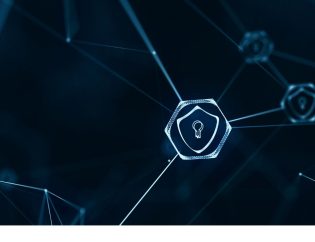
Table of Contents
Introduction
Understanding Blockchain’s Impact on Cybersecurity
Benefits of Decentralized Data Protection
Real-World Applications of Decentralized Technology
Blockchain’s Contribution to Solving Cybersecurity Issues
Challenges in Adopting Decentralized Technology
Blockchain: Trend or Future of Cybersecurity?
Future Outlook for Blockchain in Cybersecurity
Customer Testimonial
Conclusion
FAQs
Introduction
Blockchain is becoming a popular way to improve cybersecurity. Its secure and decentralized system helps protect digital data from online threats. In this article, we will look at whether blockchain is really a big change in cybersecurity or just a short-term trend.
Understanding Blockchain’s Impact on Digital Security
- Secure and Unchangeable Data: Blockchain stores data in a secure and unchangeable way, making it hard to alter or erase once entered.
- Originally for Cryptocurrencies: Initially created for cryptocurrencies, blockchain is now used in various industries to improve digital security.
- Decentralized Storage: Unlike traditional systems that store data in one location, blockchain spreads data across multiple computers, reducing the risk of hacking.
- Strong Encryption: Blockchain uses strong encryption techniques to protect data from unauthorized access.
- Transparency: Blockchain allows anyone to view and verify the data, building trust among users.
- Useful for Sensitive Information: Especially beneficial in industries like healthcare and finance, where safeguarding sensitive information is crucial.
- Prevents Data Manipulation: Blockchain ensures that information remains intact and prevents unauthorized changes.
- Key Tool for Digital Security: With secure, transparent and unchangeable records, blockchain plays a vital role in keeping digital systems safe and trustworthy.
Benefits of Decentralized Data Protection
Decentralized technology offers several key benefits when it comes to securing data and protecting digital systems:
- Immutability: Once data is recorded in the system, it becomes permanent and cannot be altered, ensuring the integrity of information and making it highly reliable for audits.
- Decentralization: The absence of a central authority reduces the risks of data breaches that typically arise from vulnerabilities in centralized systems.
- Increased Transparency: With all transactions recorded in a shared ledger, transparency is enhanced, allowing stakeholders to verify data and build trust.
- Advanced Encryption: Transactions are secured through cryptographic methods, adding an extra layer of defense against cyber-attacks.
These advantages make decentralized technology a valuable tool in protecting sensitive data across industries such as finance, healthcare and beyond.
Real-World Applications of Decentralized Technology
Decentralized technology is being used in many areas to solve cybersecurity problems:
- Securing Data Storage: It ensures that data is encrypted and spread across many places, making it harder for unauthorized people to access it.
- Identity Management: It helps create secure digital identities, reducing the chances of identity theft and fraud.
- Smart Contracts: These are self-executing agreements with rules already set, making processes automatic and reducing human errors, while also increasing security.
- Threat Intelligence Sharing: This technology allows for safe sharing of information about potential cyber-attacks, helping to respond more quickly.
Table 1: Common Blockchain Applications in Cybersecurity
| Use Case | Description |
| Data Storage Security | Secure storage, prevents tampering |
| Digital Identity Protection | Identity security, fraud prevention |
| Smart Contracts | Automated transactions, no intermediaries |
| Threat Intelligence Sharing | Secure data exchange, better threat response |
Blockchain’s Contribution to Solving Cybersecurity Issues
Blockchain can effectively tackle several common cybersecurity threats:
- Data Breaches: Blockchain ensures that data is securely stored and cannot be altered, making it much harder for unauthorized individuals to access or manipulate sensitive information.
- Phishing Attacks: Blockchain-based systems can verify digital identities, preventing impersonation attacks. By ensuring that the right people are accessing the right information, the risk of phishing attacks is minimized.
- Ransomware & Malware: Because of its decentralized nature, blockchain reduces the impact of malware attacks. Even if one part of the system is compromised, the rest of the network remains secure, preventing widespread damage.
- Denial of Service (DoS) Attacks: Blockchain networks store data across multiple nodes, meaning no single server or node is responsible for the entire network. This reduces the risk and impact of Distributed Denial of Service (DDoS) attacks, as the attack cannot overwhelm a central server.
These advantages make blockchain a powerful tool in defending against common cybersecurity threats, providing stronger protection for digital data and systems.
Challenges in Adopting Decentralized Technology
While decentralized technology has many advantages, there are some challenges to keep in mind:
- Scalability Issues: As the network grows, it can get slower and have trouble processing large amounts of data quickly.
- High Energy Use: Some decentralized systems, like those using proof-of-work, need a lot of computer power, which can use a lot of energy and harm the environment.
- Compatibility with Old Systems: It can be hard to connect new decentralized technology with older systems that businesses are already using.
- Unclear Regulations: Because decentralized technology is still new, rules about how to use it—especially in industries like finance and healthcare—are still being developed, causing confusion for businesses.
Blockchain: Trend or the Future of Cybersecurity?
- Growing Use Cases: Blockchain is being used more and more in different industries, showing it can do more than just power cryptocurrencies. It’s becoming a key part of cybersecurity.
- Tamper-Proof Records: Blockchain keeps data safe by making it impossible to change or delete. This ensures that data stays true and secure.
- Decentralized Network Benefits: By removing the need for a central authority, blockchain lowers the risk of attacks that target a single system or location.
- Better Transparency: Blockchain allows everyone to see the transactions, creating trust and making it easier to track changes in data.
- Better Identity Protection: Blockchain helps secure digital identities, making it harder for hackers to steal or impersonate someone’s information.
- Challenges to Overcome:
- Scalability: As more people use blockchain, it can slow down, making it harder to process a large number of transactions.
- Energy Use: Some blockchain systems use a lot of power, which can be expensive and harmful to the environment.
- Integration Issues: It’s hard to fit blockchain into older systems, especially for companies using outdated technology.
- Regulatory Uncertainty: Laws around how to use blockchain are still being figured out, especially in industries that need strong regulations.
- Promise for the Future: Despite these challenges, blockchain’s role in cybersecurity is growing and it could help create a safer, more transparent digital world.
Future Outlook for Blockchain in Cybersecurity
- Wider Use in Different Industries: More companies in fields like finance, healthcare and government will start using blockchain to protect their sensitive information.
- Stronger Security: Future updates to blockchain could make it even safer, with better ways to protect against cyberattacks.
- Working with Other Technologies: Blockchain will likely team up with AI, machine learning and cloud computing to create better and faster ways to detect and stop cyber threats.
- Clearer Rules: As blockchain becomes more popular, there will be better rules and guidelines to help businesses use it safely.
- Long-Term Benefits: If we solve current challenges, blockchain could become a key tool for ensuring data security, privacy and protection against cyber threats.
Is blockchain the future of cybersecurity or just hype? 🔐🚀 With its ability to secure data, prevent fraud and enhance transparency, it’s reshaping digital protection. Reality or buzzword? #CyberSecurity #Blockchain
— Hyper Secure (@HyperSecure) February 19, 2025
Customer Testimonial
“Implementing blockchain for cybersecurity in our organization has been a game-changer. It has enhanced our data security, especially in preventing fraud and unauthorized access. The decentralized nature of blockchain offers us peace of mind, knowing that our systems are better protected from emerging cyber threats.” — John Smith, IT Director at Secure Tech Solutions
Conclusion
Blockchain plays a key role in cybersecurity, offering important benefits like better data protection and stronger defense against threats. As the technology grows, more businesses will likely use it. At Hyper Secure, a leading Cybersecurity Services Company, we help businesses integrate blockchain solutions into their security systems to keep them safe from new and evolving threats.
FAQs
What is blockchain in cybersecurity?
Blockchain is a decentralized technology that enhances data security through cryptographic encryption and transparency.
How does blockchain improve data protection?
It prevents data manipulation by storing records in immutable, distributed ledgers that are resistant to tampering.
What are the main challenges of blockchain in cybersecurity?
Blockchain faces scalability issues, high energy consumption and integration challenges with legacy systems.
Is blockchain suitable for all industries?
While it holds promise for many sectors, its adoption depends on addressing industry-specific challenges, like regulatory concerns.
How secure is blockchain technology?
Blockchain provides robust security, but like any technology, its security depends on proper implementation and infrastructure.
What does the future hold for blockchain in cybersecurity?
Blockchain is expected to play an increasingly important role in securing data and systems, as the technology matures and overcomes existing limitations.








